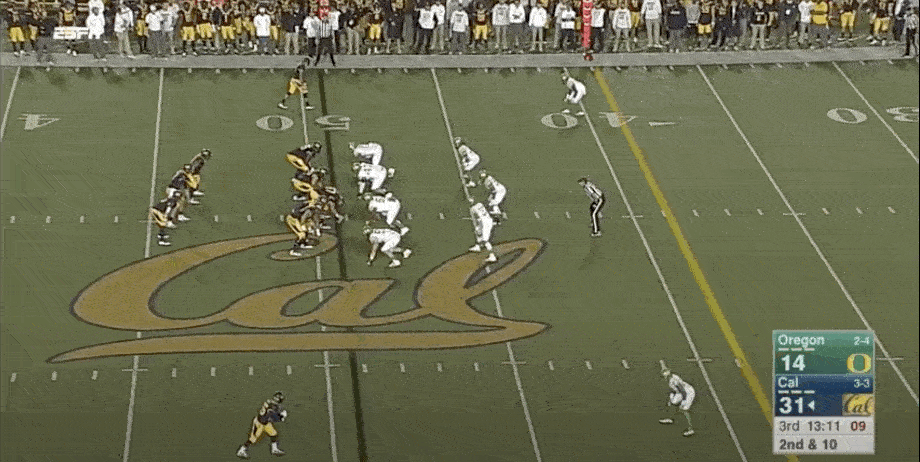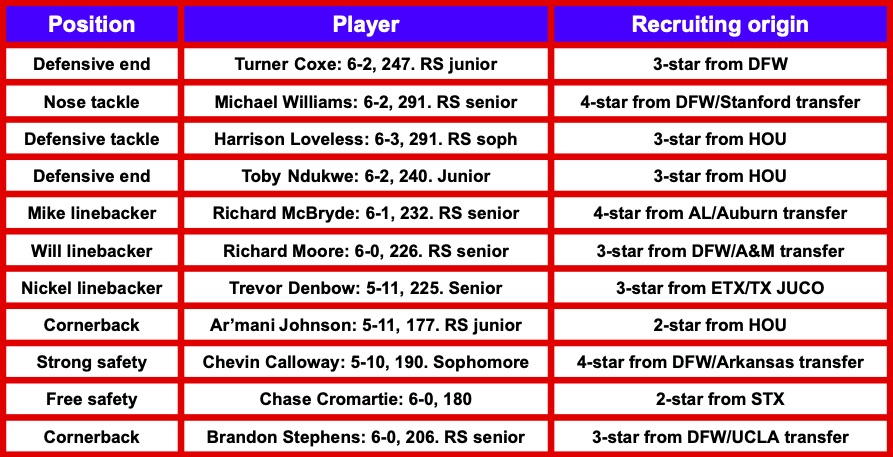When SMU hired Chad Morris I began to suspect that the Mustangs might be on their way up again in the Texas football scene. I reasoned that Morris knew the Texas landscape well and wasn’t going to attach his rapid rise to the program if they weren’t finally re-committing to the program after being gutted by the NCAA’s “death penalty” back in 1987.
For most of the next two decades, the Mustangs struggled to win any games.
But even before the Mustangs hired Morris they’d made an interesting move in the basketball world. They rebuilt “Moody Coliseum” in 2007 with a big jumbotron, new floors, new seating, and $40 million overall in renovations. A few years later they hired Larry Brown to run the basketball program. Moody became a hot place in Dallas where you could spot famous people like George W. Bush and the Mustangs had a nice run before getting busted for academic fraud.
Shortly afterwards they hired Morris, who went 2-10, then 5-7, then 7-5 before leaving to be the head coach at Arkansas (now offensive coordinator at Auburn). When Morris left they found the perfect replacement.
Sonny Dykes
Sonny Dykes came up under the pirate, Mike Leach at both Kentucky and also in the early days at Texas Tech. He had a nice run as an offensive coordinator for Arizona State then as head coach for La Tech before getting snatched up by the Cal Bears.
That proved to be a match made in hell. The Texas native was appalled by the Bay Area academic program’s commitment to football, which probably struck him as less than what you could expect from many a Texas high school. He looked for outs when he could find them, despite having a chance to coach Jared Goff and beating Texas in consecutive early season shootout wins.
Dykes interviewed at multiple spots, leveraged a contract extension from Cal, and then still looked for an out that same offseason and was a finalist for the Baylor job before losing to Matt Rhule. That flirtation with Baylor immediately after signing an extension lead Cal to give up and fire him. He was out of work for a very brief period, doing some consulting for TCU, before taking the SMU job upon Morris’ departure for Arkansas in 2017.
Like many others, his brand of Air Raid was influenced by the rise of RPOs and what Art Briles was doing at the turn of the last decade. The 2016 Cal Bears were mostly a 4-wide team but they did emphasize being able to run the football and they had a hilarious 20 personnel package featuring fullback Malik McMorris, who stood at 5-11, 310 pounds.

If your fullback is primarily coming in to lead block or pass protect and do virtually nothing else, you might as well lean into it right?
The Bears struggled to consistently outscore people in the Pac-12 and their defense often sucked. It was a similar dynamic to Kliff Kingsbury at Texas Tech. The Bears just didn’t have talent advantages, didn’t have enough buy-in (not an issue at Tech), and struggled to build a winning defense. Their new coach Justin Wilcox has more or less the opposite issue.
What’s a winning strategy at SMU?
For years the criticism of SMU around Dallas was that they didn’t recruit the city very well at all. They’d fill out their rosters with players recruited from across the state and country without emphasizing any of the talented schools in South Dallas.
Part of the problem for SMU was that they were missing some of the less intense undergraduate programs that big time football schools can often use to allow their players to avoid intensive and challenging coursework. The school is also pretty competitive about who gets in and with a location near University Park they’ve been known as an “old money” kind of snobby school for some time. Not exactly a beacon for South Dallas kids.
The original “Pony Express” teams that claimed National Championships in 1981 and 1982 were great because they bought a generational running back named Eric Dickerson and paired him with another amazing running back named Craig James. The National Championship claims are dubious, the ’81 Mustangs were 1-1 against ranked teams with a loss to Texas and the ’82 Mustangs tied Arkansas 17-17 in the SWC season finale. Still, they went a combined 21-1-1 over those two seasons and obliterated most of the other Texas schools.
That’s not so much of a winning strategy anymore. There’s plenty of money connected to SMU but buying up blue chip players to go compete in the AAC is a tough sell when prominent Big 12, SEC, and B1G programs are regularly patrolling the state for top talents.
What the Mustangs do have working in their favor is being the only major football program within Dallas itself and then ironically, having developed some of their undergrad and grad programs just in time for an era of transfers.
Samples and the portal
Recruiting Dallas had actually been a bit of a labor for Tom Herman’s Texas program through the first few classes before they started making major headway after hiring Ra’Shaad Samples to the recruiting department.
Samples was a one-time 4-star recruit out of Skyline HS, where his dad Reginald Samples was then the head coach. He went to Oklahoma State but then transferred to Houston and concussions derailed his career and prevented him from realizing his athleticism. As a recruiter and a coach, he has shined. Since entering that world, his dad Reginald took over at Duncanville HS which is suddenly finding their roster stocked full of high level prospects.
Ra’Shaad helped Texas connect with D-Ville quarterback Ja’Quinden Jackson and some other Dallas prospects before SMU snatched him up and offered him the role of running back coach and recruiting coordinator. He’s clearly well connected across Dallas.
The initial signing class Samples was around for didn’t quite reflect the promised commitment to make SMU a school that represents the South Dallas community and not just the monied folk of North Dallas and Highland Park. However, check out the following commitments to the 2021 class:

Beyond those signees, which include top players from both the oft-ignored South and inner city Dallas schools as well as some of the more SMU-esque private schools, the Mustangs have also signed players from East Texas and Houston. They’re also in on 5-star running back Camar Wheaton from East Dallas and 4-star offensive tackle Savion Byrd from South Dallas (Duncanville). Either of those signees would be enormous wins for the Mustangs.
There’s no doubt that they’re finally starting to get the sorts of high school recruits that a competitive AAC program can expect to land. That’s not all though.
Check out a prospective depth chart of their 2020 offense.

They’ve been a bit coy about what exactly they have planned on offense for 2020. Former Gus Malzahn assistant Rhett Lashlee turned his one very successful season with SMU into the Miami Hurricanes coordinator job. Under Lashlee they ran double tight end sets for much of 2019 and I suspect we’ll see more of that in 2020 given the addition of Kedrick James and the move of big receiver Judah Bell to tight end. Also, new offensive coordinator Garrett Riley (Lincoln’s little bro) has an Air Raid background but he spent last year coaching running backs at Appalachian State in a double tight end run game.
As you can see, the lowest rated recruit is Kylen Granson (former Westlake teammate of Sam Ehlinger) who had 43 catches for 721 yards and nine touchdowns last season. They have several big time Texan talents who started their careers at other schools and decided SMU was a nice landing spot for a variety of reasons. In some regards they have more talent here than your average Big 12 team and the offensive line, which is mostly home built, includes all five returning starters. Left tackle Jaylon Thomas was 2nd team All-AAC in 2019.
Now the defense:

Again, via the transfer portal the Mustangs have been able to stock the roster with more well regarded talent than you’d tend to find on a Big 12 team. They have a pair of SEC linebackers, some 4-star defensive backs in the secondary (former 4-star Nebraska transfer Cam’Ron Jones backs up Denbow), and then the biggest win was getting Michael Williams from Stanford.
The Cardinal grad transfer was a two-year starter for Stanford and is a different caliber of big, 280+ pound D-lineman than you can tend to get at a place like SMU.
The Mustangs have become transfer university and are loading up on former blue chip players via that route. Obviously the biggest example is Shane Buechele, whom they got with two years of eligibility remaining and who’s strong 2019 season put him on the cover of Dave Campbell Texas Football for 2020.
The Mustangs have three pitches they can make to talented transfers, who tend to make decisions differently than high school players.
Pitch 1: Struggling to find playing time? Come here and be at the top of the food chain at your position!
Pitch 2: Looking for grad school? We have multiple well regarded grad programs and a successful alumni network!
Pitch 3: Regretting leaving Texas? Come play in Dallas, have your family see you play, and get connected to a Texas-based alumni network!
Between all that and the aggressive and fun schemes that they run on both sides of the ball, SMU has a particularly strong pitch to make to various transfers. Lots of talented Texans leave the state every year and many of them regret it for one reason or another.
SMU went 10-3 in 2019, obviously they have the talent and pieces to potentially build on that success and contend for an AAC Championship in 2020. What’s more, Dykes is beginning to establish a formula that could sustain success and allow for a fantastic and competitive rivalry with Houston and TCU. At long last he Pony Express is back on track.
********
Read more about the history and development of the Air Raid and Texas football in my book. SMU is conspicuously absent from the timeline, they’ve been out of the picture for the duration of the Big 12’s existence as a conference.

The Big 2, little 8, and major forces guiding Big 12 football – Concerning Sports
[…] high can Baylor rise through increased investment? SMU? […]